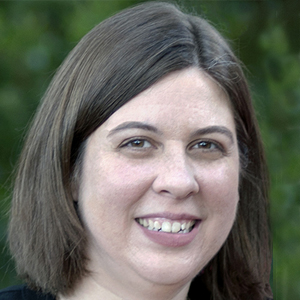How sugar substitutes disrupt liver detoxification
Results from a new study suggest that two sugar substitutes disrupt the function of a protein that plays a vital role in liver detoxification and the metabolism of certain drugs. These sugar substitutes, also known as non-nutritive sweeteners, provide a sweet taste with few or no calories.
“With an estimated 40% of Americans regularly consuming non-nutritive sweeteners, it’s important to understand how they affect the body,” said Laura Danner, a doctoral student at the Medical College of Wisconsin. “In fact, many people don’t realize that these sweeteners are found in light or zero-sugar versions of yogurts and snack foods and even in non-food products like liquid medicines and certain cosmetics.”
Danner will present the new research at the American Society for Biochemistry and Molecular Biology annual meeting during the Experimental Biology (EB) 2022 meeting, to be held April 2–5 in Philadelphia.
In their new work, the researchers studied the non-nutritive sweeteners acesulfame potassium and sucralose using liver cells and cell-free assays, which allow the study of cellular processes such as transport.

They found that acesulfame potassium and sucralose inhibited the activity of P-glycoprotein (PGP), which is also known as multidrug resistance protein 1 (MDR1). PGP is part of a family of transporters that work together to cleanse the body of toxins, drugs and drug metabolites.
“We observed that sweeteners impacted PGP activity in liver cells at concentrations expected through consumption of common foods and beverages, far below the recommended FDA maximum limits,” said Stephanie Olivier Van Stichelen, PhD, who leads the research team. “To our knowledge, we are the first group to decipher the molecular mechanism by which non-nutritive sweeteners impact detoxification in the liver.”
The experiments also showed that the sweeteners stimulate transport activity and likely bind to PGP, and thus compete with and inhibit the transport of other substrates such as xenobiotics, drugs and their metabolites, short-chain lipids and bile acids.
Although the researchers caution that the study is preliminary and needs to be confirmed in preclinical and clinical studies, the findings suggest that non-nutritive sweeteners might be problematic for people who take medications that use PGP as a primary detoxification transporter. These include certain antidepressants, antibiotics and blood pressure medications.
“If future studies confirm that non-nutritive sweeteners impair the body’s detoxification process, it would be essential to study the potential interactions and determine safe levels of consumption for at-risk groups,” said Danner. “It might also be important to include specific amounts non-nutritive sweeteners included on food labels so that people can better track their intake.”
Although the U.S. Food and Drug Administration recommends that non-nutritive sweeteners stay below an acceptable daily intake amount — the amount included in about 35 diet sodas for acesulfame potassium or eight diet sodas for sucralose per day — food manufacturers are only required to list them in the ingredients. They don’t have to indicate the amount of non-nutritive sweetener used in the product.
Next, the researchers plan to use more complex models of drug transport to determine the extent to which acesulfame potassium and sucralose might interfere with detoxification and drug metabolism. They are also studying mixes of these sweeteners, which would be more representative of how they are found in food products.
The researchers point out that because PGP is expressed at exchange surfaces throughout the body and plays an important part in maintaining systems like the blood–brain barrier, it will also be important to investigate how PGP inhibition could interfere with normal functioning of cells in other organs.
Laura Danner will present this research from 12:30–1:45 p.m. Tuesday, April 5, in Exhibit/Poster Hall A–B, Pennsylvania Convention Center (Poster Board Number A186) (abstract).
Enjoy reading ASBMB Today?
Become a member to receive the print edition four times a year and the digital edition monthly.
Learn moreGet the latest from ASBMB Today
Enter your email address, and we’ll send you a weekly email with recent articles, interviews and more.
Latest in Science
Science highlights or most popular articles

Using DNA barcodes to capture local biodiversity
Undergraduate at the University of California, Santa Barbara, leads citizen science initiative to engage the public in DNA barcoding to catalog local biodiversity, fostering community involvement in science.

Targeting Toxoplasma parasites and their protein accomplices
Researchers identify that a Toxoplasma gondii enzyme drives parasite's survival. Read more about this recent study from the Journal of Lipid Research.

Scavenger protein receptor aids the transport of lipoproteins
Scientists elucidated how two major splice variants of scavenger receptors affect cellular localization in endothelial cells. Read more about this recent study from the Journal of Lipid Research.

Fat cells are a culprit in osteoporosis
Scientists reveal that lipid transfer from bone marrow adipocytes to osteoblasts impairs bone formation by downregulating osteogenic proteins and inducing ferroptosis. Read more about this recent study from the Journal of Lipid Research.

Unraveling oncogenesis: What makes cancer tick?
Learn about the ASBMB 2025 symposium on oncogenic hubs: chromatin regulatory and transcriptional complexes in cancer.

Exploring lipid metabolism: A journey through time and innovation
Recent lipid metabolism research has unveiled critical insights into lipid–protein interactions, offering potential therapeutic targets for metabolic and neurodegenerative diseases. Check out the latest in lipid science at the ASBMB annual meeting.

